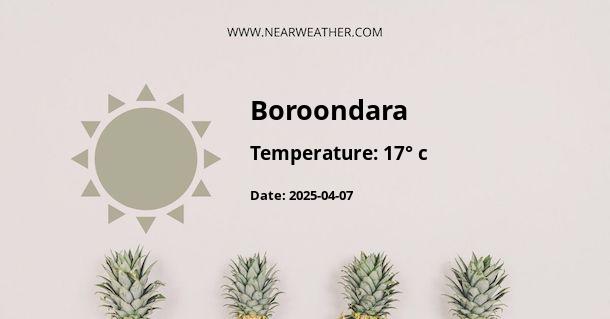Boroondara, AU Weather and Climate Overview
Boroondara, located in the eastern suburbs of Melbourne, Australia, experiences a moderate climate with distinct seasons throughout the year. Understanding the weather patterns and climate variations in Boroondara is essential for residents, tourists, and businesses operating in the area. Let's take an in-depth look at the year-round climate and weather conditions in Boroondara, AU.
Seasonal Weather Variations
Boroondara experiences four distinct seasons: summer, autumn, winter, and spring. Each season brings unique weather patterns and temperature fluctuations, creating a diverse climate throughout the year.
Summer (December - February)
During the summer months, Boroondara experiences warm and occasionally hot temperatures. The average maximum temperature ranges from 25°C to 30°C, providing ideal conditions for outdoor activities and recreational pursuits. However, hot spells can occasionally result in temperatures exceeding 35°C, leading to heatwaves and elevated fire risks.
Autumn (March - May)
Autumn in Boroondara is characterized by mild and stable weather conditions. The average maximum temperature ranges from 20°C to 25°C, creating comfortable outdoor environments for residents and visitors. The season also brings colorful foliage as the leaves on trees change, creating picturesque landscapes throughout the area.
Winter (June - August)
Winter in Boroondara brings cool and occasionally chilly temperatures. The average maximum temperature ranges from 13°C to 16°C, with nighttime temperatures dropping lower. Occasional cold fronts can result in temperatures falling below 0°C, leading to frost formation in some areas. Light rain and cloudy skies are common during the winter months.
Spring (September - November)
Spring marks the transition to warmer weather in Boroondara. The average maximum temperature ranges from 18°C to 22°C, creating pleasant conditions for outdoor activities and events. The season also brings increased rainfall, contributing to the rejuvenation of flora and fauna throughout the region.
Precipitation and Rainfall
Boroondara experiences moderate levels of annual rainfall, contributing to lush greenery and vibrant landscapes. The distribution of rainfall throughout the year influences the local ecosystem, agricultural practices, and outdoor recreational opportunities.
The table below illustrates the average monthly rainfall in Boroondara, highlighting the variations in precipitation across different seasons:
| Month | Rainfall (mm) |
|---|---|
| January | 50 |
| February | 45 |
| March | 55 |
| April | 70 |
| May | 80 |
| June | 90 |
| July | 100 |
| August | 90 |
| September | 80 |
| October | 70 |
| November | 60 |
| December | 55 |
The data shows that the winter months of June, July, and August receive the highest average monthly rainfall, contributing to wetter conditions during this period. Conversely, the summer months of December, January, and February experience relatively lower levels of rainfall, indicating drier weather patterns.
Sunlight and Daylight Hours
The amount of sunlight and daylight hours significantly impact daily activities, outdoor recreation, and overall well-being. Boroondara's latitude influences the duration of daylight throughout the year, leading to variations in sunlight exposure across different seasons.
The chart below illustrates the average daylight hours in Boroondara for each month, showcasing the fluctuation in sunlight duration across the year:
The data highlights that Boroondara experiences longer daylight hours during the summer months, with the highest sunlight exposure in December. In contrast, the winter months, particularly June and July, have shorter daylight hours, leading to reduced sunlight and extended periods of darkness.
Extreme Weather Events
Boroondara occasionally experiences extreme weather events, including heatwaves, thunderstorms, and occasional hailstorms. Understanding and preparing for these events are essential for residents and local authorities to mitigate potential risks and ensure community safety.
On average, Boroondara experiences approximately 5 to 10 days of thunderstorms per year, primarily occurring during the summer months. These thunderstorms can bring heavy rain, strong winds, and occasional hail, impacting outdoor activities and infrastructure.
Furthermore, heatwaves are a notable weather phenomenon in Boroondara, with temperatures exceeding 35°C during hot spells. These heatwaves can pose health risks, particularly for vulnerable populations, requiring proactive measures to mitigate the impacts of extreme heat.
Conclusion
In conclusion, Boroondara, AU, boasts a moderate climate with distinct seasonal variations in temperature, rainfall, sunlight, and extreme weather events. Understanding the year-round weather and climate patterns is crucial for residents, businesses, and visitors to adapt and thrive in Boroondara's diverse environmental conditions.
A - Boroondara's Latitude is -37.826401 & Longitude is 145.052994.
A - Weather in Boroondara is 15° today.
A - Climate Conditions in Boroondara shows overcast clouds today.
A - Humidity in Boroondara is 77% today.
A - Wind speed in Boroondara is 8.06 km/h, flowing at 202° wind direction. today.
